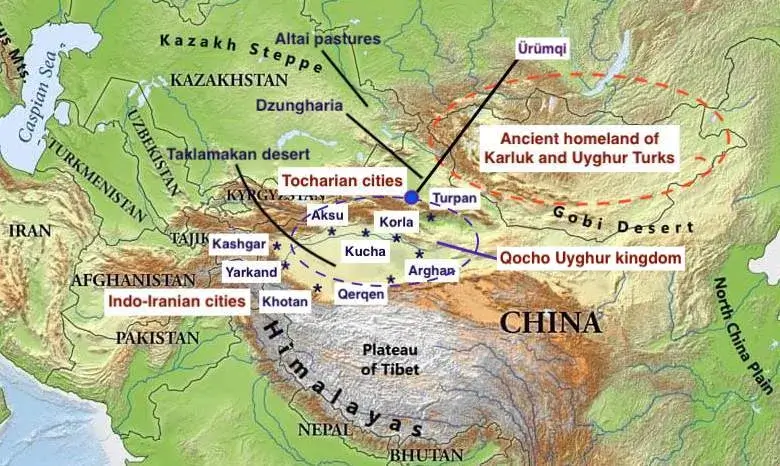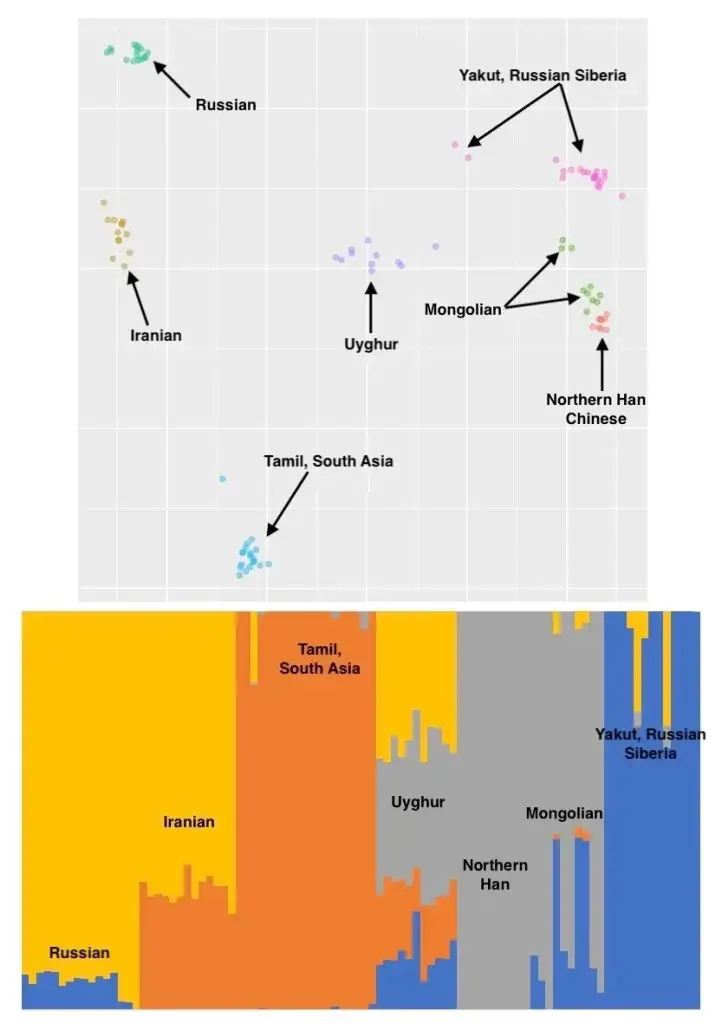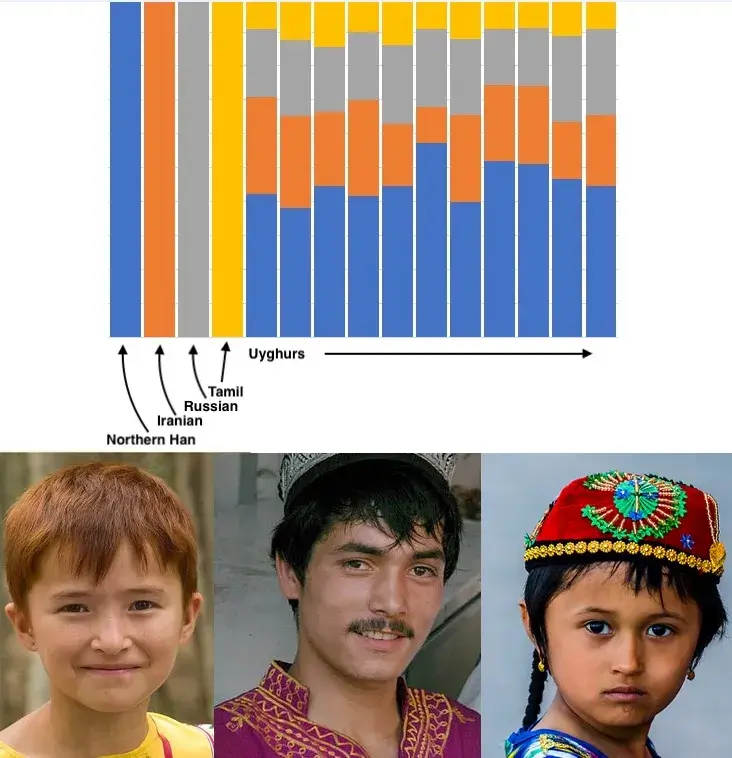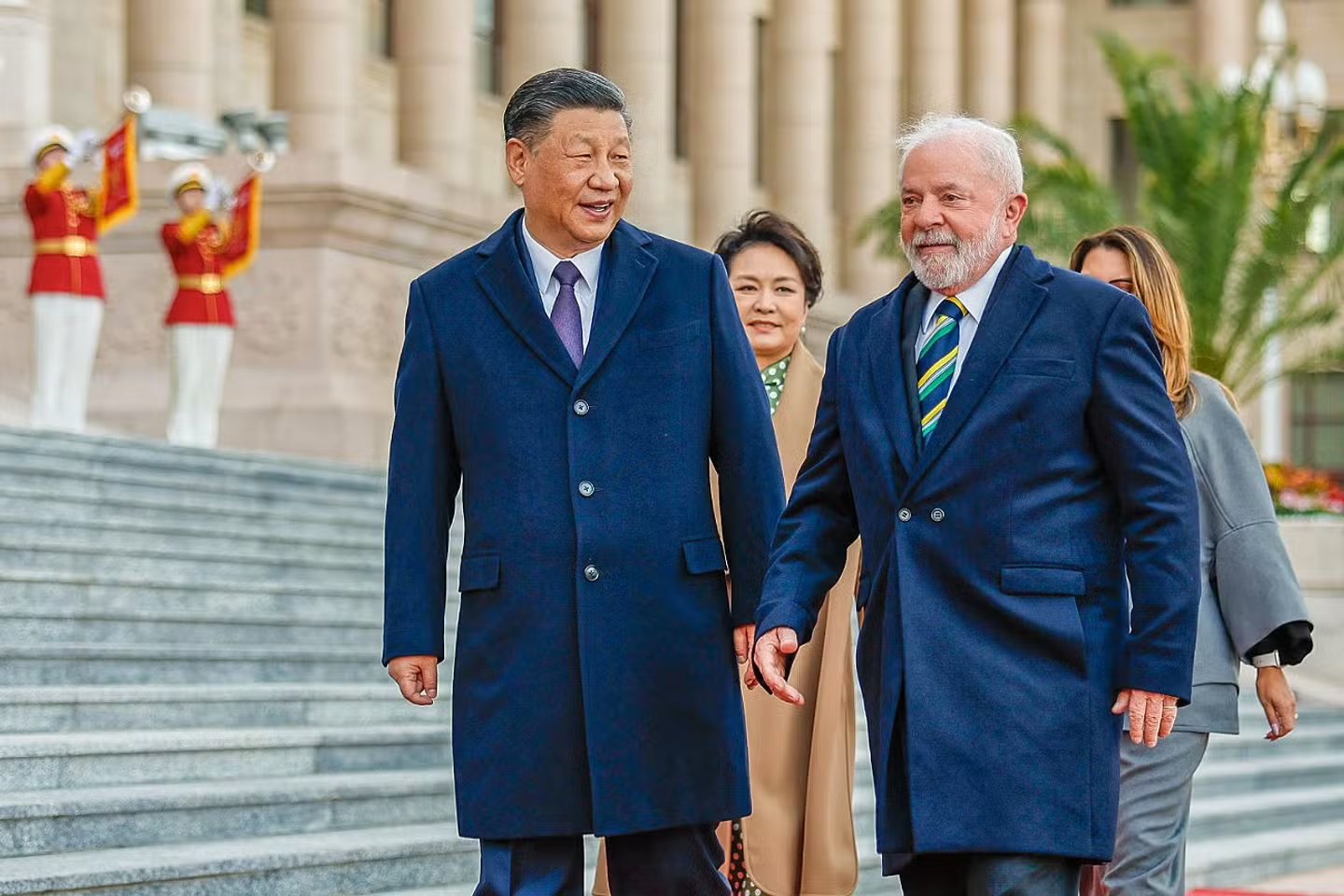Eternal Equipoise: millennia at Eurasia’s heart

How Xinjiang’s Uyghurs perennially bridge east and west
Razib Khan
On March 1, 2014, eight knife-wielding ethnic Uyghur assailants attacked passengers at a Kunming railway station in the province of Yunnan, China, killing 31 and wounding 143 others. Occurring deep in southern China, where Han are the overwhelming majority, the terror attack shocked the nation. Some called it the PRC’s 9/11. Given the attackers’ links to Uyghur separatism and the East Turkestan independence movement that seeks to liberate the western province of Xinjiang, the Kunming killings were viewed as political terrorism. The next year, the general secretary of the Chinese Communist Party (CCP), Xi Jinping, began to promote the idea of the Sinicization of Islam in Xinjiang. The more recent mass roundups of Uyghurs into re-education camps were part of this broader goal of forcibly assimilating the Muslims in western China into the national identity, reshaping them into Chinese with incidental Uyghur characteristics. The contemporary historical context of these actions is the threat of 20th-century Uyghur separatism, with its international connections to both early 20th-century pan-Turkism and later, 20th-century global Islamism. But there is more to the story than the recent conflicts between an exotic minority in a far-off province and a resurgent Han ethnos. China claims a 5,000-year-old history, but the Uyghur relationship to this narartive is both complex and fundamentally mostly a sideline to their long history. Uyghurs occupy the heart of Eurasia culturally, genetically and historically, but they have long operated within a gray zone between west and east, part of each and yet apart from both. Theirs is a new identity, created in the 20th century from antecessors whose ultimate roots reach back more than 10,000 years; embattled heirs to a tradition that has existed in equipoise between west and east for the last 11,700 years, since the end of the Ice Age.
But the Uyghurs’ current geopolitical predicament is only a bit more than 250 years in the making. The modern name of their homeland, Xinjiang, comes from the Chinese word for “New Territories.” A vast land more than twice the size of Texas, it was only annexed in the 1750’s by the ethnic Manchu emperors of China, during the Qing Dynasty, when ravenous imperial powers divvied up Eurasia’s heart between them. Initially ruled with a relatively light touch by the Qing, Xinjiang was integrated into China proper in the 1800’s. The province makes China a truly continent-spanning nation-state and harbors great mineral and energy reserves. Xinjiang lies so far west at its westernmost edge that its outermost city, Kashgar, is nearly as far from Shanghai as from Jerusalem. Geographically, the forbidding Tien Shan mountains, which regularly crest 20,000 feet, bisect the province. To the north lie the pastures of Dzungharia, for many centuries inhabited by the western Mongols: the Oirat tribes, until their genocide at the hands of the Manchu in the same decades as Xinjiang’s conquest. To the south, is the vast Taklamakan desert, ringed on all sides by a series of oases inhabited by Uyghur farmers, artisans and traders. Though the desert’s temperatures regularly range from summer highs over 100 degrees Fahrenheit to below 0 degrees in the winter, staples like rice, wheat and cotton flourish in the sunny well-watered oases, and the hot-house conditions also suit melons, apricots and peaches. These oases depend upon the many streams fed by the Tien Shan and Kunlun Shan ranges to the north and south. These islands of human occupation were sufficiently close to each other to serve as stopover points along ancient trade routes. Strung together like stepping stones, they formed the central hinge on the ancient Silk Road, the major bridge between Central Asia and China.
The southern half of Xinjiang: Uyghurstan or East Turkestan, is also coterminous with the Tarim Basin. A vast interior depression starkly visible on any physical relief map of Eurasia, it was probably barely inhabited by our species before the Holocene. There was simply not the continuous habitable territory necessary for foragers on foot. Instead, the true prehistory of human occupation of the Tarim likely begins after the last Ice Age, as Eurasians began to impinge upon it from west, north, east and south, planting crops, driving herds and transforming it into the last redoubt of a dozen nations. What had been terra incognita quickly matured into the throbbing heart of humanity’s supercontinent, fusing together civilizations via the migration of both cultures and peoples.
Nowhere men: the West in the East and the East in the West
Uyghurs are Sunni Muslims who speak a Karluk Turkic language. Their history is rich because their oases have long been at the intersection of empires, from the great conflict between Arab Muslim Caliphates and Tang Dynasty China 1,300 years ago, to the 19th-century “Great Game” between Britain, Russia and China. But perhaps most salient to outsiders are their exotic Eurasian features; Uyghurs can look Iranian, European or Chinese, or most often a mix of all three. In China they are striking due to their “Western” features, many having long noses, large eyes and wavy hair; because of these characteristics Uyghur actors and models have long been in demand out of proportion to their numbers in the People’s Republic of China (PRC). But in Europe and the Middle East, Uyghurs are marked out for their Asiatic features.
Turkey has long had a Uyghur minority that numbers in the tens of thousands. Many are politically active, being engaged supporters of Uyghur self-determination and separatism. Due to their shared Turkic heritage and history, many Turks sympathize with the Uyghur cause. 2015 saw a politically motivated attack on an Istanbul Chinese restaurant by an enraged mob reacting to reports of Uyghur oppression by the Peoples’ Republic of China. The further tragedy here is that the chef and workers at the restaurant were themselves Uyghurs. As Mandarin-speaking foreigners with a distinctly East Asian appearance, in Turkey the Uyghur seems very Chinese to his western cousins, just as he seems exotically western to his fellow Chinese citizens.
These cultural, historical and anthropological truths are reflected in genetics. A set of Uyghurs were part of the original Human Genome Diversity Project (HGDP) data set collected by L. L. Cavalli-Sforza and colleagues decades ago. Testing them against a range of Eurasian populations illustrated clearly their genetic diversity and unique position within the continent.

To repeat this demonstration, I pooled data comprising 11 northern Chinese Han, 11 Mongols, 17 Russians, 23 Siberian Yakuts, 12 Uyghurs from the HGDP, 20 Indian Tamils from the 1000 Genomes, and 14 Iranians from the Estonian Biocentre. The cleaned data set (it retains only variants that intersect across all the samples with at least 99% call-rates) offers 253,000 genetic markers for comparison, and I ran a principal component analysis (PCA) and admixture clustering on these samples. The former analysis (upper visualization) just takes the genetic data and breaks it into independent dimensions which can then be projected onto a two-dimensional plane. The x-axis explains the largest variation in the data, and neatly maps onto Eurasia’s west-east genetic gradient. The y-axis explains the second largest component of variation and maps onto the north-south gradient in Eurasia. Uyghurs are often said to be a mix of European and East Asian heritage, but the PCA clarifies that this recipe is too simplistic. If that were the right model fit, they’d fall between the Russians and one of the East Asian populations. Instead, the admixture plot, where I assumed four ancestral populations, shows that Uyghurs are a mix of diverse East Asian and West Eurasian populations.
Letting the admixture model run in unsupervised mode at K = 4 breaks East Asia into northern (Siberian) and southern (Han East Asian) elements. The historical Uyghurs and their medieval empire were based out of what is today Mongolia, so the Siberian affinity is reasonable. Their later migration south to the Tarim Basin no doubt meant they were exposed to people with more Han genetic affinities, whether those were Han proper or not (more likely not, as various Tibetan people have long been in close proximity). But what about the western component of their heritage? To probe this more finely, I ran K = 4 with a narrower set of populations in supervised mode, with Uyghurs being left to vary as a mixture of only Russians, Iranians, Tamils or Han Chinese.

The results here reflect that the Uyghurs are 40-50% East Asian, but their West Eurasian ancestry remains split between Iranians (West Asians), Russians (Europeans) and Tamils (South Asians). To be clear, these chosen populations are proxies and do not suggest Uyghurs descend literally from these groups. Rather, they descend in part from ancestral groups strongly resembling these populations.
Read Full Article.









